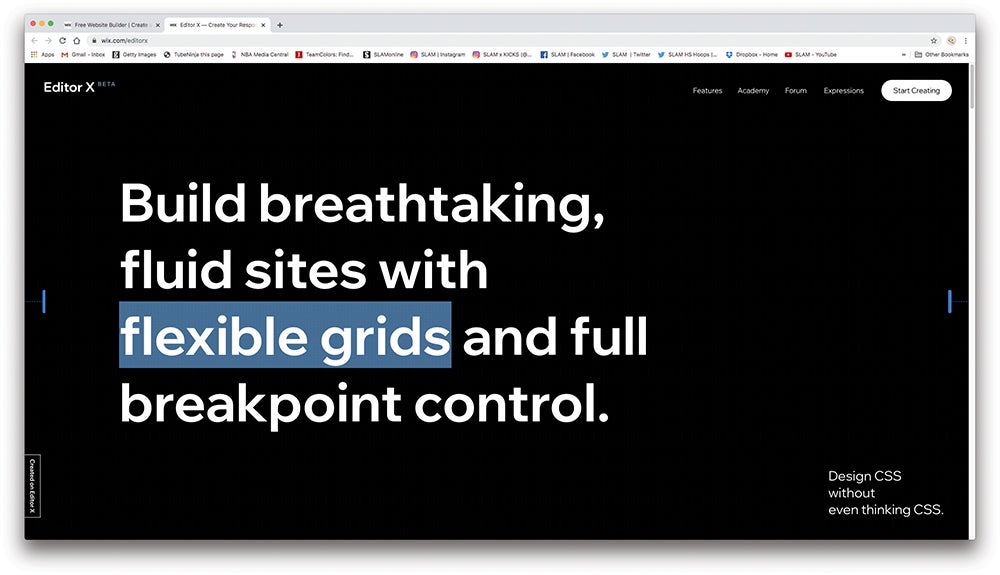It’s easier than ever to build your own digital presence. We tested and reviewed some of the latest offerings.
4 min read
This story appears in the
July 2020
issue of
Entrepreneur. Subscribe »
 Emily L’Ami launched her brand’s website the old-fashioned way: She paid an agency $10,000 to make it. But the result was underwhelming — and that was a problem. Her company, a therapeutic-perfume startup called Bodha, was taking off. She needed an upgrade.
Emily L’Ami launched her brand’s website the old-fashioned way: She paid an agency $10,000 to make it. But the result was underwhelming — and that was a problem. Her company, a therapeutic-perfume startup called Bodha, was taking off. She needed an upgrade.
So even though she’s not technically inclined, L’Ami tried to build a site herself using Squarespace. “I gave myself two days,” she says. “I decided, I’m going to stick with it and figure it out.” The result: Bodha.com is a stunner — original photos, integrations with social media, contact forms, and the all-important shopping cart. Now it draws about 12,000 page views per month and is a significant driver of sales to her business.
Success stories like these are now common for website builders like Squarespace, Wix, and GoDaddy. Years ago, they all offered basic services — designing a simple site, registering a domain, and so on. But they’ve since evolved into comprehensive business tools, featuring things like a full-featured shopping portal, SEO assistance, a CRM, live-chat functionality, and much more. Starting this year, they’ll even help businesses do marketing and promotions.
Related: 3 Branding Tips to Bring Your Startup’s Story to Life
Scott Frankum, a web design expert, says it’s now possible for any entrepreneur to build complex sites using modern builders. Wix’s new product, called Editor X, even supports font scaling, grid layouts, a full improved blog platform with SEO, and advanced responsive design (which automatically adjusts to screen size, user behavior, and operating system).
“Sites used to be flat brochures,” he says. “Now they can handle business processes, provide help desk support, and link to customer relationship management data.” Another example: With GoDaddy’s product Websites + Marketing, a wizard lets you optimize and insert search terms on your home page for better Google results, and you can enable site-wide Google ads.
With Squarespace, you can run email campaigns, and web visitors can sign up for events. A brand-new feature shows your Instagram page on your website — which L’Ami loves.
What’s next for modern website builders? Natasa Djukanovic, the CMO of top-level domain company Domain.Me, says the builders will likely adopt emerging trends. This might include skeuomorphism (mimicking real-world objects) and neomorphism (dark and light shadows). Content marketing — a way to draw in new visitors — will evolve using long-tail keywords for niche markets. She does offer a warning, though. “It’s important to follow trends that feel right for your brand rather than just implement trends for the sake of popularity,” she advises.
Related: 5 Proven Ways to Keep Visitors on Your Website
Frankum says website builders will add more features for business process automation — like what to do if a visitor needs sales or support help but doesn’t want to talk to anyone. They may offer mobile text marketing over Bluetooth, and much more. But for L’Ami, her next move might feel straight out of the year 2000: She’s thinking of adding a CRM. No problem — these services have that, too.
Test Me: We built a site on each platform. Here’s how it went.
SQUARESPACE
Price: $18 a month for business plan
Best feature: Integrating Instagram content onto your actual site
Our review: Design templates are better than average. Our test site has a spacious, friendly look with plenty of white space.

GoDaddy
Websites + Marketing
Price: Starts at $10 a month
Best feature: Inserting SEO terms on your home page and in blog posts
Our review/ The tools are all intuitive and powerful. One ding: You can’t assign blog posts to a specific author.

Wix Editor X
Price: TBD
Best feature: Responsive design improves the site on any screen
Our review: The interface is easy and well-designed, but some of the advanced features for responsive design might require some training.
loading…

